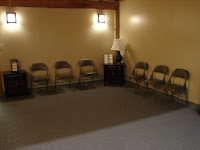




Our 3000 square foot academy consists of a main lobby and waiting room, observation areas, two training floors, separate Men, Women and Youth dressing rooms and restrooms and a business office.
Our programs consist of a self-defense curriculum that instructs students in all areas of hand-to hand combat. Namely stand-up self-defense, ground-defense, multiple attackers, weapons, anti-bullying strategies, stranger awareness and assault prevention.
Our instructor staff consists of well-rounded, experienced, professional and safety conscience teachers. Our student body is made up of Men, Women and Children from all walks of life.
Please take a moment to stop by our academy to observe a class, log on to our website to learn more about our programs or give us a call to talk to our friendly and knowledgeable staff.
We look foward to seeing you on the mats!
Sensei Carter
senseicarter@gmail.com
803.546.6079
803.546.6079



